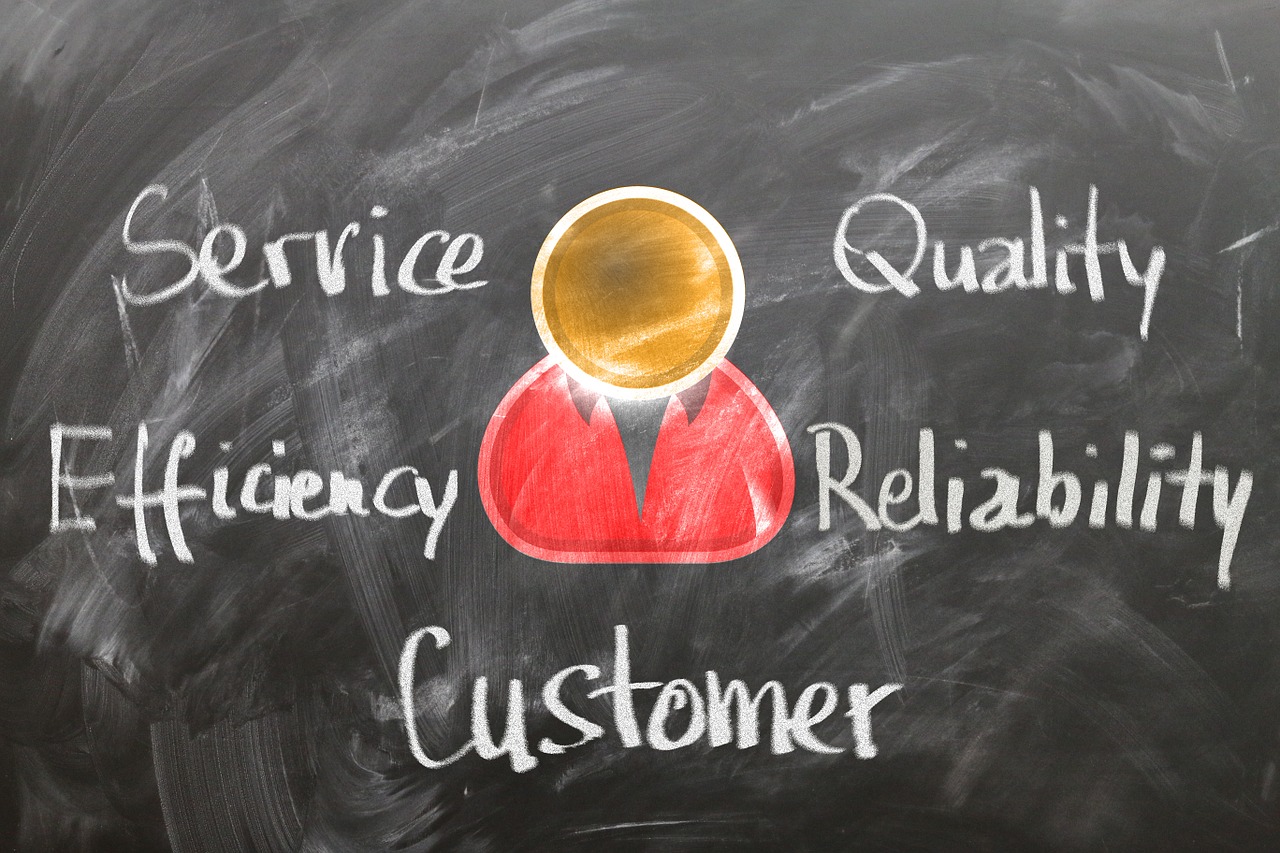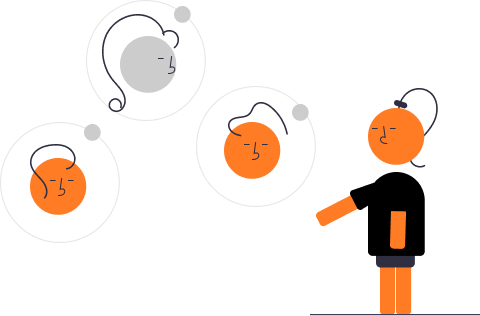Master Customer Service Retention Strategies: A Step-by-Step Guide

In the realm of customer service, customer retention stands as the cornerstone of sustainable business growth. The ability to keep customers coming back is not just a strategy; it's a necessity for thriving in today's competitive market. Throughout this guide, various customer service retention strategies will be unveiled, each designed to fortify the bond between businesses and their loyal clientele. As Erik Blad aptly said, "Retaining existing customers is more profitable than acquiring new ones." Embracing these excellent customer retention strategies can pave the way for long-term success.
Understanding Customer Retention
In the realm of business, customer retention serves as a vital component in ensuring long-term success. Retention refers to the ability of a company to retain its existing customers over a specified period. This is achieved through the implementation of strategic retention strategies that focus on building strong relationships and providing exceptional customer service.
What is Customer Retention?
Define customer retention
Customer retention can be defined as the process by which businesses aim to retain existing customers rather than acquiring new ones. It involves cultivating loyalty and trust among customers to encourage repeat purchases and long-term engagement.
Explain why customer retention is important for businesses
Customer retention is crucial for businesses as it directly impacts profitability and sustainability. Research from Harvard Business School indicates that increasing the customer retention rate by just 5% can lead to a significant growth in profits ranging from 25-95%. This underscores the financial benefits of prioritizing customer retention efforts.
Benefits of a High Customer Retention Rate
Discuss the advantages of a high customer retention rate
A high customer retention rate offers numerous benefits to businesses. Notably, it leads to increased profitability, reduced marketing costs, and enhanced brand reputation. According to studies by Bain & Company, boosting customer retention by 5% can result in profit increases ranging from 25% to 95%.
Provide statistics or research findings to support the points
Recent research highlights that focusing on improving customer retention can yield substantial rewards for businesses. For instance, companies that increase their retention rates witness notable revenue growth over an 18-24 month period, along with reduced customer acquisition costs and an expanded customer base.
Personalizing Customer Experiences

In the realm of customer service, personalization emerges as a pivotal strategy for enhancing customer loyalty and fostering lasting relationships. By tailoring services and products to meet individual needs, businesses can create memorable experiences that resonate with their customers on a deeper level. Let's delve into the art of personalization and explore how it can elevate your customer retention strategies.
Know Your Customers
Explain the importance of understanding customer needs and preferences
Understanding your customers is akin to unlocking the key to long-term success. By delving into their unique needs, preferences, and pain points, businesses can tailor their offerings to provide personalized solutions. This not only enhances customer satisfaction but also cultivates a sense of loyalty and trust.
Discuss methods to gather customer data
Gathering customer data is essential for gaining insights into consumer behavior and preferences. Utilizing tools such as surveys, feedback forms, and analytics software can help businesses collect valuable information about their customer base. Additionally, leveraging social media listening tools enables companies to monitor online conversations and sentiment around their brand.
Tailoring Services and Products
Provide examples of how to personalize services and products
Personalizing services and products involves customizing offerings to meet the specific needs of individual customers. For instance, e-commerce platforms often use algorithms to recommend products based on a customer's browsing history or purchase behavior. Similarly, service-based businesses can offer tailored solutions that address each customer's unique requirements.
Highlight the impact of personalization on customer loyalty
The impact of personalization on customer loyalty cannot be overstated. Research indicates that 80% of consumers are more likely to engage with brands that offer personalized experiences. By demonstrating an understanding of their preferences and anticipating their needs, businesses can forge stronger connections with customers, leading to increased loyalty and repeat business.
Using Free Customer Journey Template
Introduce the concept of a customer journey template
A customer journey template is a visual representation of the various touchpoints a customer encounters throughout their interaction with a brand. It maps out the entire customer experience, from initial awareness to post-purchase support, allowing businesses to identify opportunities for personalization and optimization.
Explain how to use it to enhance customer experiences
By utilizing a free Customer Journey Template, companies can gain valuable insights into the overall customer experience journey. This tool enables businesses to visualize each stage of the customer lifecycle, pinpoint areas for improvement, and implement personalized interventions at key touchpoints. Ultimately, leveraging a Customer Journey Template empowers organizations to deliver seamless experiences that drive customer satisfaction and loyalty.
Building a Loyalty Program

In the realm of customer retention strategies, establishing a robust loyalty program stands out as a pivotal approach to nurturing lasting relationships with customers. By designing initiatives that reward and incentivize loyal patronage, businesses can significantly enhance customer retention rates and foster brand advocacy. Let's delve into the intricacies of crafting an effective loyalty program and explore its profound impact on long-term customer engagement.
Designing a Customer Retention Program
Outline the steps to create a loyalty program
When embarking on the journey of creating a customer retention program, businesses must first define their objectives and target audience. Understanding the specific needs and preferences of their customers is paramount in tailoring a program that resonates with their interests. Next, companies should design a tiered reward system that offers escalating benefits based on customer loyalty levels. This can include exclusive discounts, early access to new products, or personalized services. Additionally, integrating technology solutions such as mobile apps or digital loyalty cards can streamline the program management process and enhance user experience.
Discuss different types of loyalty programs
There are various types of loyalty programs that businesses can implement to drive customer retention. Points-based programs award customers points for every purchase, which can be redeemed for rewards or discounts. Tiered programs segment customers into different levels based on their spending habits, offering increasing perks as they ascend higher tiers. Paid programs require customers to pay a subscription fee in exchange for premium benefits like free shipping or concierge services. Hybrid programs combine elements of multiple models to provide a comprehensive loyalty experience tailored to diverse customer preferences.
Benefits of Loyalty Programs
Explain how loyalty programs improve customer retention
Loyalty programs play a pivotal role in enhancing customer retention by fostering deeper connections between brands and their loyal clientele. By rewarding repeat business and incentivizing continued engagement, these programs instill a sense of value and appreciation in customers, encouraging them to remain loyal over time. Moreover, loyalty initiatives create opportunities for personalized interactions, allowing businesses to tailor offerings based on individual preferences and behaviors.
Provide examples of successful loyalty programs
Several renowned brands have successfully implemented innovative loyalty programs that have significantly boosted customer retention rates. For instance, Starbucks' "Starbucks Rewards" program offers members exclusive perks like free drinks on birthdays and personalized recommendations based on past purchases. Amazon Prime's subscription-based model provides members with expedited shipping, access to streaming services, and exclusive deals during major sales events like Prime Day. These examples showcase how strategic loyalty initiatives can not only retain existing customers but also attract new ones through word-of-mouth referrals.
Implementing Free Customer Onboarding Templates
Discuss the role of onboarding in customer retention
Effective onboarding serves as a critical touchpoint in the overall customer experience, setting the tone for future interactions and shaping perceptions of the brand. By providing seamless onboarding experiences that educate new customers about product features, benefits, and usage guidelines, businesses can reduce churn rates and increase long-term engagement. Clear communication, user-friendly interfaces, and proactive support during the onboarding process are key elements in ensuring customer satisfaction and retention.
Explain how to use onboarding templates effectively
Utilizing free Customer Onboarding Templates streamlines the onboarding process by providing standardized frameworks for guiding new users through product setup and usage. These templates typically include step-by-step instructions, visual aids such as videos or infographics, troubleshooting tips, and contact information for customer support. By leveraging pre-designed templates tailored to specific products or services, companies can expedite the onboarding process while maintaining consistency in information delivery across different user segments.
Engaging Through Email
In the digital landscape of customer retention, email marketing emerges as a powerful tool for nurturing lasting relationships with customers. Crafting effective customer service email templates is a strategic endeavor that can significantly impact customer loyalty and brand engagement. Let's delve into the art of email communication and explore how businesses can leverage this channel to enhance their retention strategies.
Crafting Effective Customer Service Email Templates
When it comes to writing engaging emails, simplicity is key. Start by personalizing the subject line to capture the recipient's attention. Keep the content concise and focused on providing value to the reader. Utilize bullet points or numbered lists to highlight key information and make the email easy to skim. Remember, clarity trumps complexity in effective email communication.
Provide tips for writing engaging emails:
Personalization: Address recipients by name for a more personalized touch.
Clear Call-to-Action: Encourage readers to take specific actions.
Concise Content: Keep paragraphs short and to the point.
Visual Appeal: Use images or infographics to break up text and enhance visual interest.
Discuss the importance of personalized email communication:
Personalized email communication goes beyond addressing recipients by name; it involves tailoring content based on their preferences, behaviors, and past interactions with your brand. By segmenting your email list and sending targeted messages, you can create a sense of exclusivity and relevance that resonates with customers on a deeper level.
Using Email to Build Customer Loyalty
Regular email communication serves as a bridge between businesses and their loyal clientele, fostering ongoing engagement and brand advocacy. By sending timely updates, exclusive offers, and valuable content via email, companies can nurture relationships with customers beyond transactional interactions.
Explain how regular email communication can foster loyalty:
Consistent email communication keeps your brand top-of-mind for customers, reinforcing their connection with your products or services. By sharing relevant updates, industry insights, or special promotions through emails, you demonstrate ongoing value to your audience, encouraging continued engagement and loyalty.
Provide examples of successful email campaigns:
Several brands have excelled in leveraging email campaigns to build customer loyalty effectively. For instance, Airbnb sends personalized travel recommendations based on user preferences and past bookings, enhancing user experience and driving repeat bookings. Similarly, Sephora's Beauty Insider program offers exclusive deals and early access to new products via targeted emails, incentivizing customer engagement and loyalty.
Offering Exclusive Deals and Updates
In today's competitive market landscape, offering exclusive deals is a compelling strategy for enhancing customer retention rates. By providing customers with access to limited-time offers or special discounts via email newsletters or promotional campaigns, businesses can create a sense of urgency and exclusivity that drives repeat purchases.
Discuss the impact of exclusive offers on customer retention:
Exclusive deals not only incentivize immediate purchases but also cultivate long-term loyalty among customers. By rewarding patronage with exclusive perks or discounts, businesses show appreciation for customer support while fostering a sense of belonging within their community.
Provide tips for creating compelling offers:
Scarcity Marketing: Highlight limited availability or time-sensitive nature of offers.
Tiered Discounts: Offer escalating discounts based on purchase frequency or amount.
Personalized Recommendations: Suggest products based on past purchases or browsing history.
Early Access: Provide VIP access to new product launches or upcoming sales events.
In the realm of business, customer retention serves as the lifeblood that sustains long-term success. To enhance customer retention, numerous strategies and tools are available, ranging from targeted approaches to comprehensive solutions. Of course, one might consider an all-in-one software like QuickCEP, which integrates Live Chat, AI Chatbot, marketing tools, and CDP, offering a multifaceted platform to bolster this vital aspect.
By focusing on building enduring relationships with customers, businesses can secure increased profits, foster loyalty, and benefit from valuable referrals. Customer retention strategies are not merely tactics; they are foundational pillars for sustainable growth and competitive advantage within the industry.
Embracing a holistic tool such as QuickCEP, along with other customer retention strategies, is not just a choice but a strategic imperative for companies aiming to thrive in today's dynamic market landscape.
See Also
Enhancing Conversion Rates for Your Online Store: A Detailed Plan
Crafting Impactful Online Store Emails: A Comprehensive Guide
Successful Tactics for Minimizing Online Store Returns
Key Actions for Customer Experience Success: Support Desk Guide
Top 5 SEO Tactics for Boosting Online Store Sales: Complete Manual


